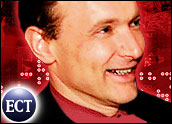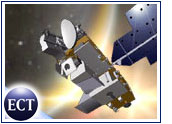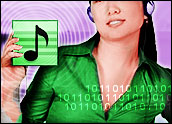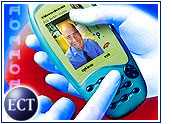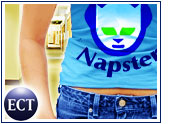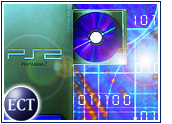
When the managers of a Danish manufacturing company arrived at Microsoft’s main campus, their expectations were as unclear as the weather outside. They wanted technology to eliminate the hassles created by their disparate business systems and streamline their operations. They just didn’t know how — or if — Microsoft could help them do these things.
Then they stepped inside the Center for Information Work, Microsoft’s showroom for some of the technology innovations that the company expects will reach information workers in coming years. Because Microsoft currently defines the office-software space, this vision — whether or not you support the company’s business processes — likely will define the future of software that seamlessly links and offers instant analysis of sales projections and inventories. It’s software designed to increase security through new methods of user identification and reportedly will enable mobile employees to stay connected in real-time.
“This tour offers a glimpse of how software is going to further increase the productivity of information workers in the coming years,” said Thomas Gruver, group product manager at CIW.
Introducing the Vision
The prototype technologies in the center have been developed by Microsoft Research and several of Microsoft’s partners. Gruver expects to introduce new technologies as they become available every one or two years. Most of those included in the new center aren’t yet fully operational and aren’t expected to show up in Microsoft products for another three to five years. But through simulation, the prototypes come to life a few years early at the CIW.
Customers who take the hour-long tour play the role of managers and workers in a make-believe multinational firm, Contoso Widget Corp. The scenario, Gruver says, allows visitors to experience firsthand the potential of these prototype software technologies when used together in a realistic setting.
The center uses the Contoso scenario to demonstrate how future software will address business challenges and realities that have grown in recent years, including mobile computing and synchronization of partner systems in different locations, Gruver says.
A section of an actual semi-truck cab and a simulated work floor are included in the tour to help demonstrate how Tablet PCs, mobile software and RFID tags allow a Contoso supplier to scan the contents of its delivery trucks while en route and then redirect a truck to make an unscheduled delivery.
Simulating the Boardroom
The center’s simulated boardroom demonstrates how other mobile and remote-computing technologies will eliminate many of the current barriers for companies whose employees are scattered around the globe. A “Ringcam” sits at the center of the meeting table, providing remote attendees with a 360-degree view of the meeting.
The device, which combines several standard Web cameras in a circular array, also tracks activity in the room, focusing the camera on whoever is speaking at a given time.
The Tablet PCs allow the Contoso managers to share handwritten notes and diagrams on a single virtual whiteboard with meeting attendees in the room as well as people connecting remotely.
The notes are also automatically and permanently stored so they can be searched and referenced later.
Company-Wide Effort
According to Microsoft, the CIW represents a company-wide effort to build a prototype of what productivity technology could look like three to five years from now. Microsoft regularly invites customers to see how the CIW uses workplace scenarios to demonstrate concepts of how software can help improve the way information workers manage information overload.
Another of the technologies designed to free workers from their desks consists of eight workstations in the center’s theater-like entry room. The workstations offer side-by-side dual monitors and computers integrated with phones and Tablet PCs.
The multiple screens let users keep several documents and applications open and easily accessible. Office workers can pull the wireless Tablet PCs from their cradles, allowing them to access all of the open files, applications and information stored on their full workstation or network from anywhere within the pseudo-office setting.
Software Front and Center
Microsoft includes the prototype workstations and other hardware in the center to show off the innovation of its partners. But the center’s designers went to great lengths to make sure even the gadget-loving businesspeople who are typically drawn to the center recognize it will take more than advanced hardware to create the office of the future.
On large screens in the center, long streams of code fly by as the prototype software works behind the scenes to scan Contoso’s databases and supplier inventories to make instant cost and delivery calculations. The same occurs when the software automatically schedules a meeting for the managers at a time convenient for all of them and then sends each a notice on the device he or she is currently using.
“We want to make sure it’s clear,” Gruver says, “that software is what enables workers to turn information into something usable, filtering out what is unimportant and allowing the user to make proactive, informed decisions.”
Center’s Message
The CIW software message is reinforced in less graphic but similarly dramatic ways throughout the center. All of the visitors log on to their workstations using face-recognition or other prototype security software, including one that allows them to click on preassigned points within an on-screen picture to identify themselves.
Called ClickIt, this technology is based on research showing that many people find it easier to remember points on an image than alphanumerical characters. Also, by making it harder for automated systems to sleuth identities, these new security technologies might help reduce costs typically associated with changing forgotten passcodes, Gruver says.
The fledgling Contoso managers also sample prototype interface features as they investigate how to help the widget company fill a surprise spike in demand. As e-mail, phone, voice mail and other communications flood in, converged on a single on-screen timeline, a Notification Bar sorts and alerts the managers and offers countdowns for time-sensitive messages.
Rules set by the user determine how he or she is notified and how often, across multiple devices and settings.
Feedback Key to Success
Soliciting positive and negative input is one of the center’s primary goals. Only with lots of feedback and direction from customers can Microsoft and its partners fine-tune the vision and the prototype technologies, Gruver says.
In fact, Microsoft plans to begin popping questions onto the devices the visitors use at different points of the tour. This should increase the feedback on all of the prototype technologies, not just those that stick out in the minds of visitors at the end of the tour, Gruver explains.
“The center is much like a car show with exotic prototypes,” he says. “The cars that eventually hit the road usually look much different than those at the show. Features are eliminated; others are added, based to a great extent on the reactions of car enthusiasts at the show.”
When will the prototypes in the center begin appearing in Microsoft products? It all depends on demand for the individual technologies and other factors, such as the development schedules of hardware manufacturers, Gruver says.
Some of the advances, such as multiscreen displays, already are beginning to appear in some offices. Other technologies are further off, such as some of the user-interface features.
“The future is a moving target,” Gruver says, “So this center can’t remain static. We plan to expand and revise the tour based on feedback from customers and as we have new technologies to showcase.”

